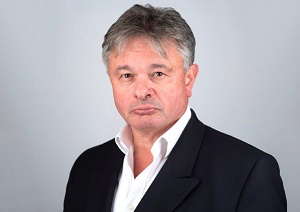In 1798, William Jennens, the reclusive financier and ‘richest commoner in England’, died.
Thus began one of the longest – and strangest – court cases in history, writes Philip Sinel, senior partner at Jersey-based law firm Sinels.
For Jennens, who had amassed a fortune equivalent to £2.2bn ($2.9bn, €2.45bn) today, died intestate; with an unsigned Will in his pocket and various properties held in trust.
Such was the complexity of his estate that the legal battle to unpick the trust would rage for almost 120-years, ending in 1915 without reaching a conclusion.
In many ways, the lack of a ruling was irrelevant, for by the time the case ended, the legal fees had consumed the entire estate.
The absurdity of the situation was not lost on contemporaries, serving as the inspiration for Charles Dickens’ serial novel Bleak House, where the interminable (and fictional) Jarndyce v. Jarndyce case saw a similar battle rage over the trusts under a Will that would also consume an entire estate.
There is clearly an essential truth to Dickens’ words: trusts are a nightmare to unravel – often deliberately so.
Used and abused
And while we are unlikely to see a recapitulation of the Jennens saga play out in English courtrooms anytime soon, the complexity – and more importantly abuse – of trust funds, remains a challenge today.
In 2006, for instance, Gordon Brown gave voice to such concerns when he sought to use the budget to prevent trusts “being used to shelter wealth from inheritance tax”, while a more recent investigation by The Daily Telegraph discovered a Worthing-based firm, Thy Will Be Done, was encouraging customers to invest £99 in complex trust funds designed to evade inheritance tax liabilities.
With trusts so routinely abused, it is no surprise that we have seen an uptick in litigation, often simply from unhappy spouses suspicious of their other halves.
As we hurtle inexorably towards recession, which will doubtless drive many to carefully examine their financial affairs closely, we can expect allegations of foul play to ensure trust litigation continues to increase for a while longer.
Financial advisers, then, must start to consider how, and why, trust litigation proceeds.
Different in practice
This last point is instructive: when it comes to unpicking a trust or navigating litigation, it is vital to understand the motivation behind its formation.
Wealthy individuals often use such arrangements as a wrapper for their affairs, grouping together a disparate portfolio of investments to protect assets against business and family risk.
On paper, such an approach is perfectly permissible; in practice, however, it is open to exploitation and abuse.
Take for example the divorce proceedings that came before the High Court in 2011, which saw a husband set up a trust in his second wife’s name to conceal a property he purchased in the Bahamas.
The deception was unveiled when it was pointed out that the trust – the unintelligently titled ‘David Thursfield Family Trust’ after the husband himself – was de facto controlled by the defendant.
Crucially, the case is indicative of how trusts are used by the less-than-ethical to obfuscate and deceive.
The case also serves as a warning that courts are not prepared to tolerate the use of trusts to misrepresent a financial position.
Root cause
But flagrant duplicity is not the only cause of trust litigation.
Indeed, like so many of the world’s problems, the root cause of many disputes are some of the banks.
For many such profit-hungry institutions, trusts appeared as a biscuit tin with the lid half off; a convenient means of tying clients and beneficiaries into in-house products and using any interaction with the trustee as an opportunity to sell, sell, sell.
In-house products are rarely competitive and usually involve hidden commissions.
As such, it was not uncommon for the parent bank to the trustee to attempt to squeeze assets out of the trust, or tie it into exclusive agreements for investment advice or loans, in order to bolster the pay day.
This is no way to run anything, and the resultant wave of litigation forced many to beat a retreat from the sector.
Profit motive
This was not necessarily good news.
Indeed, where banks feared to tread, an often similarly profit-driven entity rushed to fill the void: private equity houses.
This cuts to the core of the issue, namely that the trust relationship itself has been too often replaced by the short-term profit motive.
What we are seeing now with private equity is that it prioritises short-term financial gain over longer-term fiduciary relationships.

It goes without saying that cutting corners, in the name of squeezing as much revenue out of trusts as possible, will generate disputes.
While not as patently ridiculous as the Jennens disputes, all of these scenarios – be it exploitation by banks and private equity, or duplicity by husbands – convey the same message to advisers: the need to return to traditional models of trusteeship.
We need to restore trust to the sector and return to a time when trustees took their fiduciary duties seriously and settlors thought carefully about the calibre and motivation of the human beings they were dealing with.
Unless there is a shift, trusts will continue to be abused, lawyers will keep on suing, and advisers and their clients risk losing out.
This article was written for International Adviser by Philip Sinel, senior parter at Jersey-based law firm Sinels.








